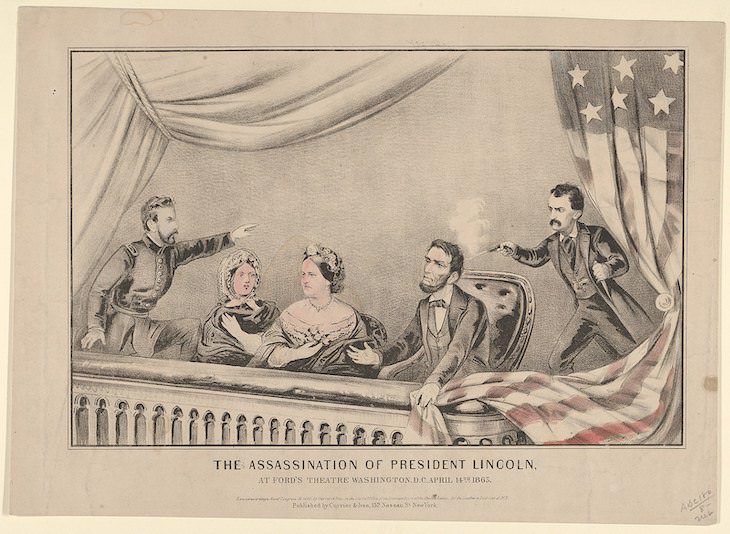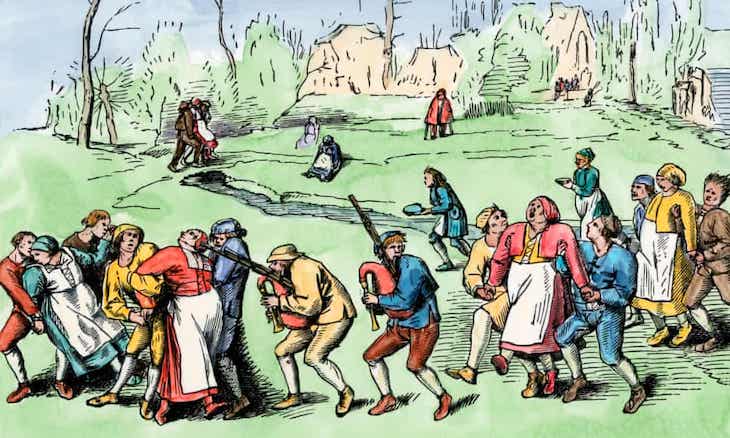
While the world is full of wonder, beauty, and heartwarming stories, it also has a dark side, full of creepy and unsettling details. So it’s no wonder that if you dig a little bit into history, there are quite a few creepy stories to be found. The following 7 facts are all true accounts of historical events that will send chills down your spine!

Image Source: Wikimedia Commons
The illustration above is one of the famous documentation of President Lincoln's assassination. Most Americans are familiar with the events of that fateful night, but the two characters on the left, Major Henry Rathbone and Clara Harris, who shared the private box with the late president and his wife, have largely been forgotten. Their lives, however, were tragically shaped by the horrors of the assassination.
Clara Harris, the daughter of Senator Ira Harris of New York and the First Lady had become friends through the Washington social scene. The president and first lady had specifically invited Harris and her fiance Major Rathbone to join them at the theater on the evening of April 14th, 1865. After John Wilkes Booth managed to enter the private box and fire a shot at Lincoln, Rathbone tried to take him to the ground, but Booth was able to get free by stabbing Rathbone's arm with a dagger.
Rathbone was never able to recover from the trauma of that night. He felt guilt for surviving the assassination and believed, as many had gossiped, that he should have done more to prevent the tragedy from happening. In the years to come, he began suffering from hallucinations that eventually declined into mental illness. On December 23, 1883, he shot Clara and stabbed himself several times with a knife, almost imitating the assassination. Clara died from the attack, and Rathbone spent the rest of his life in mental institutions.
Related: 5 Infamous Assassinations

In July of 1518, a Strasbourg citizen known as Frau Troffea kicked off what would become a full-blown ‘dancing plague’. The woman stepped onto the street and silently began to twist and twirl. She kept at it for nearly a week, and before long, some three-dozen other Strasbourg residents had joined in. By August, the dancing epidemic had claimed as many as 400 victims. With no other explanation, local physicians blamed it on “hot blood” and suggested the afflicted should just... dance it out. However, this dance fever soon turned grim. Many dancers collapsed from exhaustion, some even died of a stroke or heart attack. This strange epidemic lasted until September when the dancers were taken away to a mountaintop shrine to pray for absolution.
What could have led people to dance themselves to death? It isn’t clear to this day. Some theories suggest the dancers were part of a religious cult, and that it was a case of a mass psychogenic illness, in which physical symptoms with no known physical cause are observed to affect a group of people, as a form of social influence.
Related: 14 Creepy Facts That Will Send Shivers Down Your Spine

During the 19th century, dentists had to answer a growing demand for false teeth. Among the wealthy, sugar consumption was on the rise, which led to early attempts at teeth whitening with acidic solutions that were too strong. To deal with this growing demand, dentists found a creative, but disgusting solution: they used what is now called ‘Waterloo teeth’.
After the Battle of Waterloo in 1815, looters and scavengers began pulling the teeth from dead soldiers on the battlefield. They would sell them to dentists who would boil them, cut off their roots, and shape them into dentures, according to the BBC. Apparently, most dentists didn’t ask questions about the origins of their tooth supply, and the customers had no idea where the teeth came from.

While not so scandalous, this fact does make one feel a bit uneasy. William Shanks, a nineteenth-century mathematician, spent his entire life calculating the digits of pi. He managed to successfully calculate the first 527 digits, which in 1873 was seen as an impressive achievement. Perhaps, it was lucky that Shanks wasn’t alive in 1958 when a computer calculated the same number of digits in less than a minute... and then went on to calculate another ten thousand digits.

It is rare for tigers to attack humans, let alone eat them, but in the early 20th century, one tigress nicknamed the 'Chanpawat Tiger' is believed to have become dependent on human meat to survive. As her natural habitat of grasslands and forests were destroyed to make room for timber and farmland, prey became scarce, and the tigress seemed to have no other choice but to attack nearby villages for sustenance.
As word got out about the vicious attacks in the region, daily life was disrupted and people refused to leave their homes whenever they feared the murderous animal was around. Her reign on terror came to an end in 1907, when she was captured after almost a decade.
Related: 14 Facts From the History of Our Incredible Species

Image Source: Wikipedia
The Titanic disaster inspired countless stories and retellings, but what we’d like to talk about is a fictional story published before the disaster. "The Wreck of the Titan: Or, Futility" by Morgan Robertson, is remarkable because it includes some details that have an eerily accurate resemblance to what had happened in the real-life catastrophe.
The 1898 novella describes an ocean liner that bears the name ‘Titan’. The fictional liner was extremely close in size and length to the real Titanic, as was the speed at which it crashed into the iceberg. Both liners had a dangerous shortage of lifeboats. In the story, the Titan was also dubbed "unsinkable," and proceeded to sink on a cold April night, exactly like the Titanic.

The fear of being incorrectly pronounced dead, and consequently buried alive, peaked during the 19th century, but accounts of such tragic incidents were recorded even earlier. This fear led to the invention of ‘safety coffins’, which were coffins fitted with mechanisms that allowed the occupant to signal that they have been buried alive. Most consisted of some type of device for communication to the outside world such as a cord attached to a bell.
Some folk etymology even suggests that the phrases ‘saved by the bell’ and 'dead ringer’ come from the use of safety coffins in the Victorian era, but those claims are widely disputed.
Share these creepy facts with other history lovers!